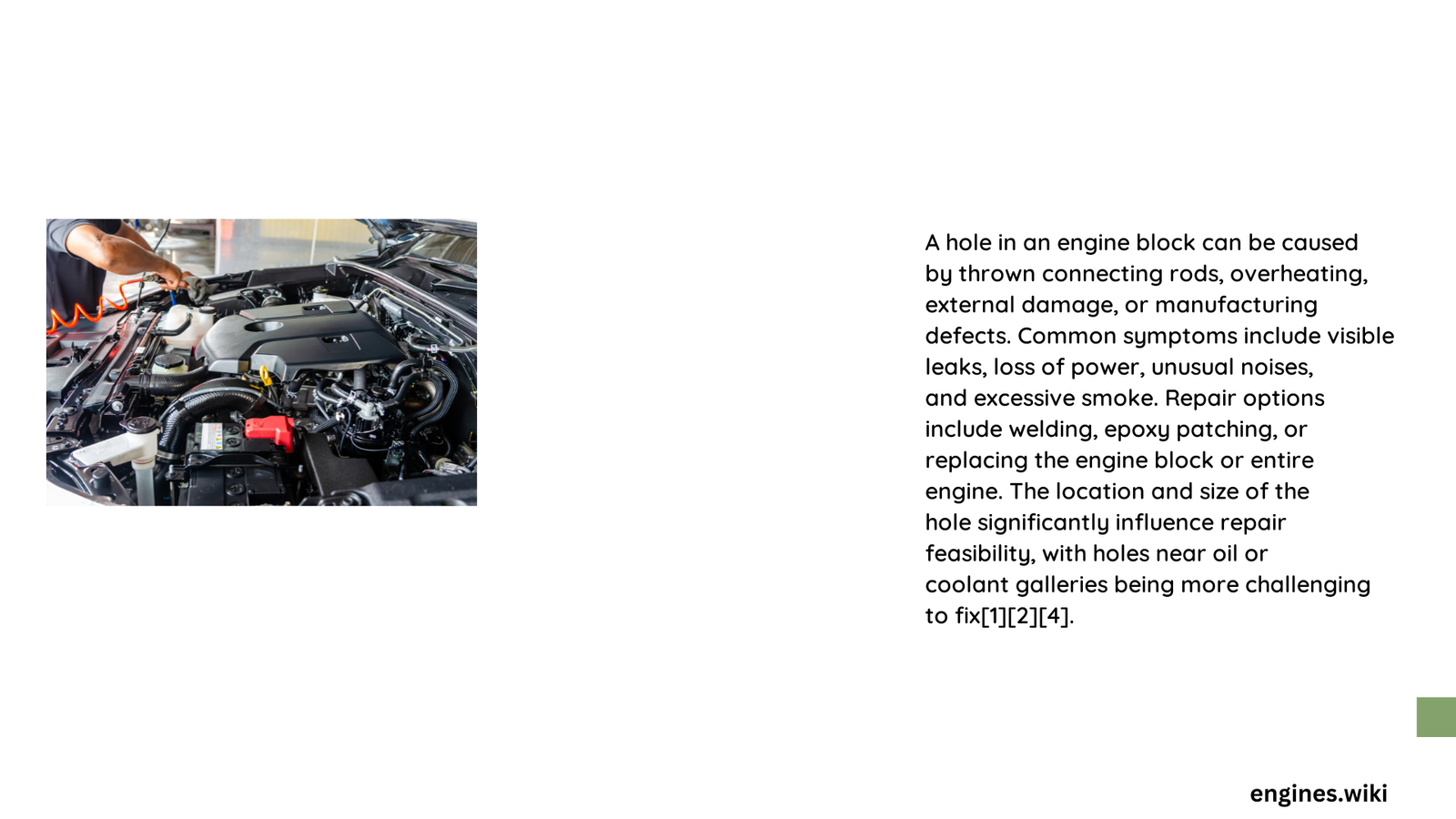Engine block holes represent critical structural components in automotive powertrains, determining precise mechanical interactions between pistons, crankshafts, and other internal mechanisms. These precision-engineered openings require meticulous measurement, maintenance, and repair to ensure optimal engine performance, preventing potential mechanical failures and maintaining structural integrity across various operational conditions.
What Are Engine Block Holes?
Engine block holes are precisely machined openings within an engine’s core structure that facilitate critical mechanical functions. These holes serve multiple essential purposes:
- Accommodate pistons and connecting rods
- Enable coolant and oil circulation
- Support crankshaft and camshaft mounting
- Provide structural alignment for engine components
Dimensional Precision Factors
| Hole Type | Typical Tolerance Range | Critical Considerations |
|---|---|---|
| Cylinder Bore | ±0.002-0.005 inches | Piston clearance |
| Crankshaft Bearing | ±0.001-0.003 inches | Oil film thickness |
| Mounting Holes | ±0.01 inches | Structural alignment |
How Do Tolerances Impact Engine Performance?

Precise tolerances in engine block holes directly influence:
- Mechanical Efficiency
- Minimizes friction
- Reduces mechanical wear
-
Optimizes power transmission
-
Thermal Management
- Controls heat dissipation
- Prevents localized stress concentrations
- Ensures uniform temperature distribution
What Measurement Techniques Ensure Accuracy?
Professional mechanics utilize sophisticated tools for engine block hole assessment:
- Bore Gauges: Measure internal diameter with 0.0001-inch precision
- Micrometers: Verify dimensional accuracy
- Optical Comparators: Detect microscopic surface irregularities
- 3D Coordinate Measuring Machines: Provide comprehensive geometric analysis
What Repair Strategies Address Hole Damage?
Sleeve Insertion Technique
- Process: Oversized sleeve pressed into damaged area
- Material Options: Steel, bronze, cast iron
- Cost Range: $100-$500
- Durability: Extends engine life by 50,000-100,000 miles
Bushing Installation
- Ideal For: Smaller, localized damage
- Precision Requirement: Tight interference fit
- Cost: $50-$250
- Application: Valve guides, sensor mounting points
What Factors Influence Hole Repair Selection?
Critical evaluation parameters include:
– Hole diameter
– Material composition
– Extent of damage
– Performance requirements
– Budget constraints
Expert Recommendations
- Always measure multiple points to confirm geometric consistency
- Use high-quality metrology tools
- Consider professional machining for complex repairs
- Maintain strict cleanliness during repair processes
Technical Specifications
Recommended Clearance Ranges:
– Piston-to-Cylinder Wall: 0.0015-0.0035 inches
– Crankshaft Bearing: 0.001-0.003 inches
– Valve Guide: 0.001-0.003 inches diametral clearance
Potential Failure Modes
- Excessive wear
- Corrosion
- Thermal stress
- Improper initial machining
- Inadequate lubrication
Cost-Benefit Analysis
| Repair Method | Average Cost | Expected Longevity | Complexity |
|---|---|---|---|
| Sleeving | $300-$600 | 75,000-150,000 miles | High |
| Bushing | $100-$250 | 50,000-100,000 miles | Medium |
| Welding | $50-$200 | 25,000-75,000 miles | Low |
Conclusion
Successful engine block hole management requires comprehensive understanding of mechanical tolerances, precise measurement techniques, and strategic repair methodologies.
Reference:
– SAE International Technical Papers
– Automotive Machining Guidelines
– Precision Machining Techniques
